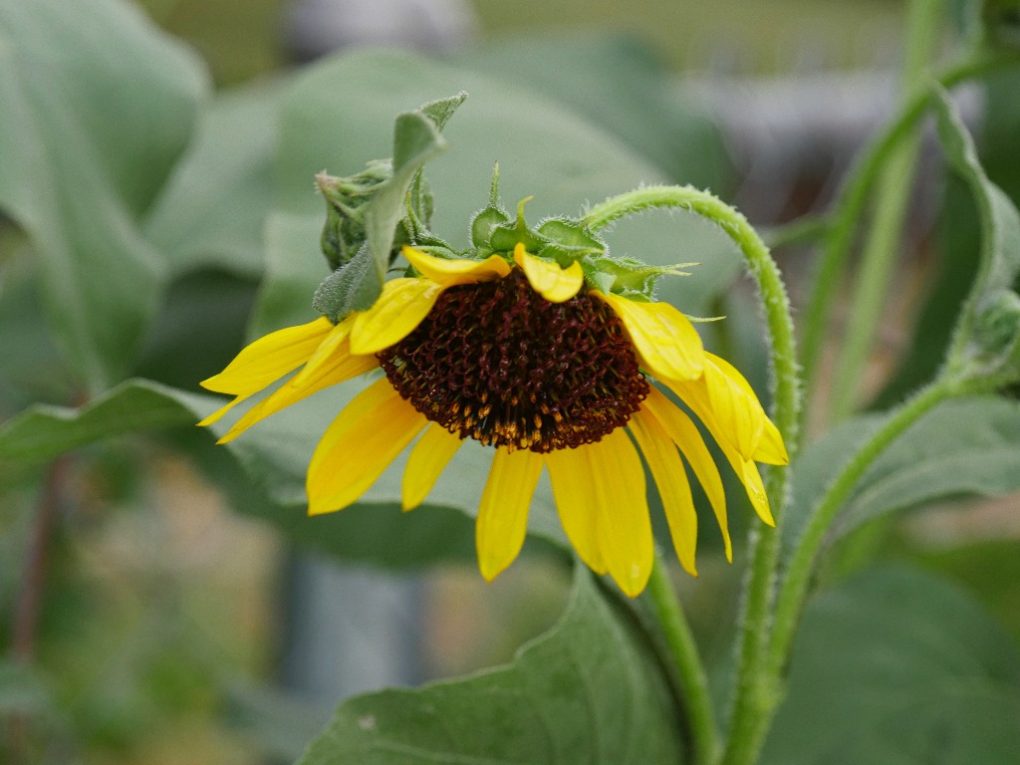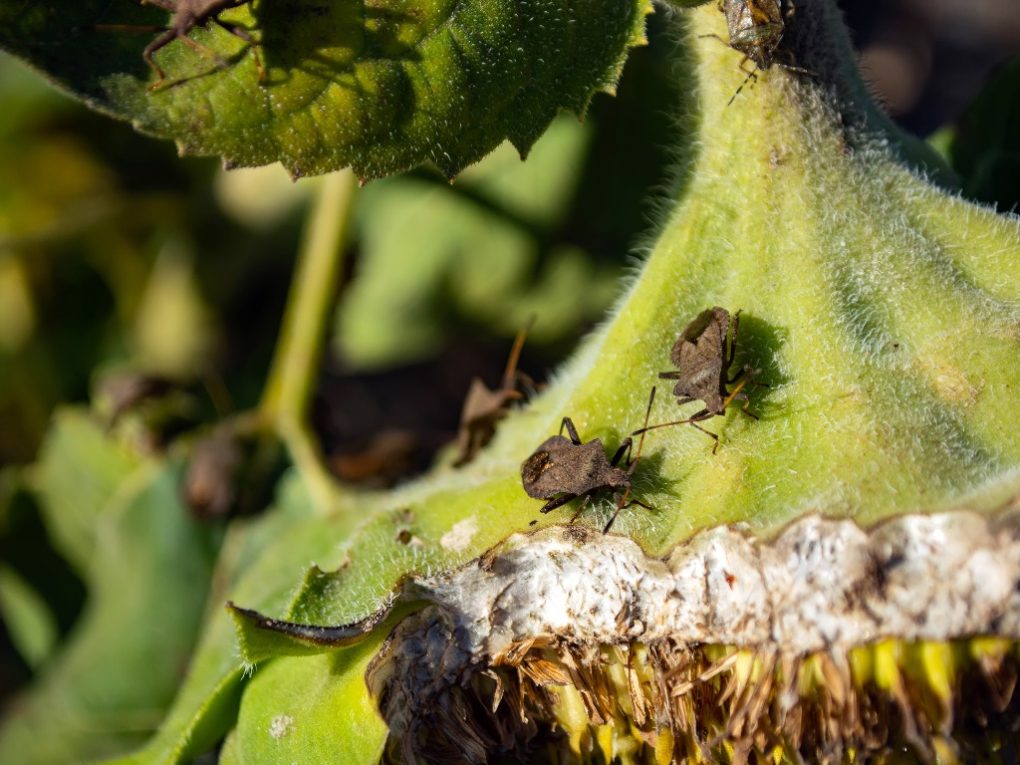Sunflowers Close at Night: Reasons Sunflowers Close Up and Why Some of Them Do Not Bloom
Sunflowers close their blooms at night because sunflowers are heliotropic, which means they follow the sun’s movement across the sky during the day. In the evening, when the sun sets, the sunflower’s head will gradually droop and face downward.
This is believed to be a protective mechanism to prevent the sunflower from losing too much moisture during the cooler and more humid nighttime hours. As the sun rises in the morning, the sunflower’s head will gradually turn back towards the east to face the sun again. This heliotropic movement is most pronounced in young sunflowers and tends to decrease as the plant matures, and the flower head becomes heavier.

Table of Contents
Why Sunflowers Close Up at Night
As mentioned, sunflowers close at night as a protective mechanism to conserve energy and moisture. During the day, sunflowers track the sun and face east in the morning, then west in the afternoon. This is called heliotropism. By tracking the sun, sunflowers maximize their exposure to sunlight for photosynthesis, which is essential for growth and seed production.
However, sunflowers cannot perform photosynthesis at night, so they do not need to face the sun. Closing up their blooms at night helps to conserve energy and prevent moisture loss through transpiration, which occurs when plants release water vapor through their leaves. This is especially important for sunflowers, which have large, broad leaves that can lose a lot of moisture overnight.
Closing up their blooms at night also helps protect the flower’s reproductive organs, which are vulnerable to damage from cold temperatures, wind, and rain. In addition, sunflowers can shield their reproductive organs from potential harm by curling up their petals.
Reasons Some Sunflowers Do Not Bloom
Immature Plants
Sunflowers require a certain amount of time and energy to grow and mature before they can bloom. However, immature sunflower plants do not bloom because they have yet to reach the stage of development where they are ready to produce flowers.
Typically, sunflowers require about 110 to 125 days from planting to maturity, depending on the variety and growing conditions. During this time, the plant will undergo several stages of growth, including vegetative growth, when it is focused on developing its leaves and stem, and reproductive growth when it shifts its focus to producing flowers and seeds.
Immature sunflower plants are still in the vegetative growth stage and have not yet shifted their energy toward reproductive growth. Instead, they need to develop a certain number of leaves and stem lengths to reach maturity before they can start to produce flowers.
Lack of Sunlight
Sunlight is a crucial factor in the growth and development of sunflowers, and the lack of sunlight can affect their ability to bloom. Sunflowers require a certain amount of sunlight to stimulate the production of hormones that trigger flowering.
When sunflowers do not receive enough sunlight, they may not reach the stage of development where they are ready to produce flowers. This is because sunlight triggers a hormone called florigen, responsible for transitioning from vegetative to reproductive growth.

Additionally, sunflowers need adequate sunlight to produce energy through photosynthesis, which is necessary for the plant to grow and produce flowers. Without enough sunlight, the plant may not be able to produce enough energy to support reproductive growth and the production of flowers.
Nutrient Deficiencies
Sunflowers require nutrients, including nitrogen, phosphorus, potassium, and other micronutrients, to grow and develop properly. When sunflowers do not receive adequate amounts of these nutrients, they may not be able to reach the stage of development where they are ready to produce flowers.
Nutrient deficiencies can limit the plant’s growth, affect the production of hormones and enzymes, and disrupt the metabolic processes necessary for reproductive growth. For example, phosphorus is essential to develop healthy roots and flowers. In addition, sunflowers deficient in phosphorus may produce weaker stems, smaller flowers, and fewer seeds.
Nitrogen is another essential nutrient necessary for producing chlorophyll, which is responsible for photosynthesis. Without enough nitrogen, sunflowers may be unable to produce enough energy to support reproductive growth and the production of flowers.
In addition to macro-nutrients like nitrogen and phosphorus, micronutrient deficiencies can negatively impact sunflower growth and development. For example, iron, magnesium, and zinc deficiencies can cause chlorosis, and yellowing of the leaves, limiting the plant’s ability to produce energy through photosynthesis.
Pest or Disease Damage
Pests can cause direct physical damage to the plant, such as by feeding on the leaves, stems, or flowers, and can also transmit diseases that can affect the plant’s health and productivity. For example, when pests damage sunflowers, they may not be able to grow and develop properly or produce flowers.
Pests can cause the plant to divert energy away from reproductive growth towards repairing the damage caused by the pest, which can delay or prevent flowering. In addition, pests can transmit diseases that can affect the plant’s health and reduce its ability to produce flowers.

For example, viruses can cause stunted growth, yellowing of leaves, and reduced seed production in sunflowers. Some pests, such as birds and squirrels, can also damage the developing seeds in the flower head, reducing the number of viable seeds produced.
Genetics
The genetic makeup of a sunflower can determine various traits, such as height, stem thickness, leaf shape, and flowering time, which can all influence its ability to produce flowers. For example, some sunflower varieties may be genetically programmed to produce fewer flowers or have a longer flowering period, which can delay or reduce flower production.
Genetic factors can also affect the plant’s response to environmental conditions, such as temperature, humidity, and photoperiod (the amount of daylight), influencing the timing and quality of flower production.
In addition, genetic mutations or abnormalities can also result in sunflowers not blooming or producing abnormal flowers. For example, mutations in genes that control flower development can result in the formation of sterile flowers or flowers with abnormal structures, which may not be able to produce viable seeds.
By selecting sunflower varieties that are well-suited to their growing conditions and monitoring for any genetic abnormalities, it is possible to promote healthy growth and encourage the production of flowers.
